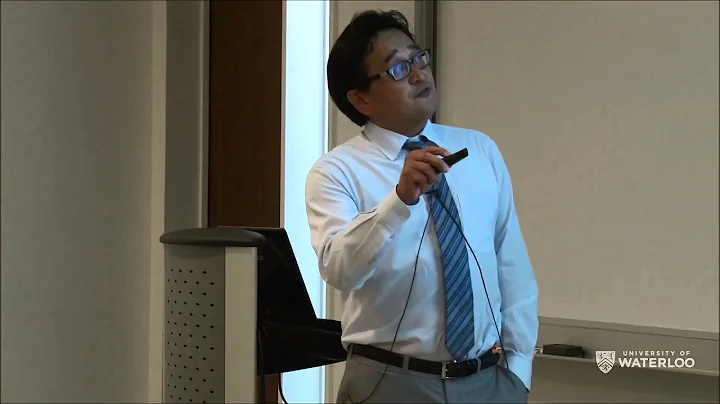

First author: Wei Xiaoxiao, Wen Xiaojian, Liu Yingying
Corresponding author: Wang Shuangyin, Chen Chen, Fu Xianzhu, Cheng Jun, Lin Hongzhen
Corresponding unit: Hunan University,Shenzhen University,Xiamen University, Suzhou Nanotechnology Direct synthesis of urea via electrocatalytic C-N coupling at room temperature is a promising alternative strategy to traditional urea synthesis methods. However, the hydrogenation of intermediate substances hinders the efficient synthesis of urea. Therefore, this work uses ceria rich in oxygen vacancies as a catalyst to anchor the key *NO intermediate through oxygen vacancies, which facilitates the subsequent C-N coupling process instead of competing protonation reactions, and the urea yield is as high as 943.6 mg h-1 g-1, better than some precious metal -based electrocatalysts. On the catalyst surface lacking oxygen vacancies, C-N coupling and protonation do not have obvious selectivity. This work provides new insights into catalyst design and development of -coupled systems.
Background introduction
Urea is one of the most important nitrogen fertilizers in the agricultural field. The industrial synthesis of urea requires a two-step high-temperature, high-pressure, high-energy-consuming path through the reaction of nitrogen and hydrogen to produce ammonia, and then the reaction of ammonia and carbon dioxide to produce urea. The burning of fossil fuels and the emissions from fertilizer-intensive industry and agriculture have caused a large amount of nitrate pollutants to be discharged into the ground. Compared with the method of reducing nitrate to synthesize ammonia and then indirectly preparing urea, direct co-electrolysis of nitrate and carbon dioxide is a more efficient way to synthesize urea. Strategy. However, electrocatalytic urea synthesis involves a multi-step electrochemical process (proton coupling electron transfer, PCET) and chemical steps (C-N coupling). The selective protonation of intermediates to generate by-products competes with the C-N coupling reaction, hindering efficient synthesis of urea.
Defect engineering is a feasible strategy to achieve efficient electrocatalytic reactions by adjusting the adsorption properties of reactants or intermediate species. Based on this, this work synthesized ceria nanorods with different concentrations of oxygen vacancies through high-temperature heat treatment, and studied the performance and mechanism of electrocatalytic coupling of nitrate and carbon dioxide to prepare urea. Through density functional theory calculations, the energy barriers of four C-N coupling paths (*NO-CO, *N-CO, *NH-CO and *NH2-CO) on the oxygen vacancy-rich and oxygen vacancy-poor CeO2 surfaces were compared. , and the protonation energy barriers of four nitrogen-containing intermediates (*NO, *N, *NH and *NH2), revealing the origin of C-N coupling and the mechanism of urea synthesis from CeO2. The reaction pathway mediated by oxygen vacancy was further verified by in situ sum-frequency resonance spectroscopy. This work established the structure-activity relationship between oxygen vacancy concentration and urea electrocatalytic activity, clarified the selective C-N coupling mechanism mediated by oxygen vacancies, and provided information for the design of efficient urea synthesis electrocatalysts and the revelation of related electrocatalytic mechanisms. New ideas.
Highlights of this article
Highlights of this article 1 Ordinary CeO2 carriers are used to obtain highly active oxygen-vacancy-rich defect electrocatalysts for urea synthesis through defect engineering.
Highlights of this article 2 promotes the highly selective transition from hydrogenation of intermediate species to carbon-nitrogen coupling by regulating the adsorption energy of intermediate species.
Highlights of this article 3 uses sum-frequency resonance and theoretical calculation analysis mechanism to clarify that the oxygen vacancy can obtain the key intermediate species *OCNO by limiting the intermediate species *NO and achieve efficient synthesis of urea.
Graphic and text analysis
In this work, CeO2 nanorods were first synthesized by hydrothermal method, and then calcined in reducing atmosphere (Ar/H2) at different temperatures to prepare ceria catalysts rich in oxygen vacancies with different concentrations. According to different annealing temperatures , named Vo-CeO2-500, Vo-CeO2-625, Vo-CeO2-750, Vo-CeO2-875 and Vo-CeO2-1000 respectively. Compared with original CeO2, the introduction of oxygen vacancies resulted in an obvious mesoporous structure on the Vo-CeO2-750 nanorods (Fig. 1a).XRD characterization proved the successful synthesis of CeO2 (Fig. 1b). As the annealing temperature increases, the EPR intensity related to oxygen vacancies gradually increases. The signal of Vo-CeO2-750 is the strongest, but the signal intensity of Vo-CeO2-875 and Vo-CeO2-1000 decreases, indicating that Vo-CeO2- 750 has the highest Vo concentration, and its morphology and crystal structure do not change significantly.

Figure 1 catalyst Physical and chemical characterization
This work first evaluated the accuracy of two urea quantitative methods (urease decomposition method and diacetyl monooxime method). It was confirmed that the urease decomposition method is a reliable urea quantitative method and is not interfered by coexisting by-products, while the diacetyl monooxime method is easily affected by the by-product nitrite and leads to false positives in urea quantification. Therefore, this work uses the urease decomposition method to quantify urea. Figure 2a shows that urea production is closely related to Vo concentration. Compared with the comparison sample, Vo-CeO2-750 exhibits the highest urea production rate in the entire application potential range, with a production rate as high as 943.6 mg h-1 at -1.6 V vs RHE. g-1, which is almost 3 times the performance of original CeO2 and superior to some reported noble metal-based catalysts. During ten consecutive electrolysis test cycles, the current density and urea yield remained almost unchanged (Fig. 2b), indicating that Vo-CeO2-750 has excellent electrochemical stability and structural stability. Moreover, if and only when nitrate and carbon dioxide are used as raw materials at the same time, a large amount of urea product will be produced (Figure 2d), indicating that urea does come from the co-electrolysis of nitrate and carbon dioxide.

Figure 2 Electrocatalytic urea performance
Based on the speculation of the reaction mechanism, electrochemical in-situ SFG spectroscopy was used to track the evolution of the bond structure of the intermediates generated during the electrocatalytic process. Compared with the results of pristine CeO2 (Fig. 3a), Vo-CeO2-750 has obvious characteristic peaks at about 1888 and 2120 cm-1, which are attributed to the accumulation of *NO and *OCNO intermediate species, respectively (Fig. 3b). As the negative applied potential increases, the SFG intensity of *OCNO gradually increases, reaches a maximum value at -1.6 V, and then decreases. The evolution of *OCNO species is consistent with the change in urea yield with applied potential, indicating that the generation of *OCNO intermediates is related to the formation of urea. It is preliminarily verified that the role of Vo is to promote the formation of *OCNO by stabilizing *NO intermediates, thereby improving Urea synthesis properties. Therefore, this work proposes a Vo-mediated electrochemical urea synthesis mechanism (Fig. 3c). The core of the reaction mechanism is that the *NO intermediate substance is adsorbed to the Vo site of the catalyst, and then coupled with *CO to form *OCNO. The process is superior to the hydrogenation reaction of *NO, and the surface of the electrocatalyst lacking oxygen vacancies is more likely to occur* NO PCET process.

Figure 3 In-situ SFG spectrum and schematic diagram of the reaction mechanism mediated by oxygen vacancies
In order to verify the feasibility and reliability of the mechanism, this work further studied the intrinsic reaction mechanism through DFT calculations. Using Vo-rich CeO2 as the catalyst, the C-N coupling energy barriers of the four N-containing intermediates are lower than the corresponding hydrogenation reactions (Fig. 4a). At the same time, the coupling processes are all thermodynamics spontaneous, indicating that in Vo-rich CeO2 catalyst surface C-N coupling is both thermodynamically and kinetically favorable. Moreover, the coupling reaction of *NO and *CO only needs to overcome the energy barrier of 0.27 eV, which means that *OCNO is tended to be formed instead of *OCN (1.75 eV), *OCNH (0.83 eV) or *OCNH2 (0.83 eV). In contrast, the coupling of *NO and *CO on Vo-deficient CeO2 is an endothermic reaction of with a reaction energy barrier of 0.52 eV (Fig. 4b), which is higher than that on Vo-rich CeO2 (0.27 eV). Although the energy barrier for the formation of *OCN (0.12 eV) and *OCNH (0.18 eV) on the Vo-deficient CeO2 surface is lower, it is still higher than the hydrogenation energy barrier of *N and *NH. On the Vo-deficient CeO2 surface, C-N coupling and protonation reactions do not have obvious selectivity. It can be seen from the adsorption configurations of *NO intermediate species on Vo-rich and Vo-deficient catalysts that the presence of Vo induces the oxygen atoms of *NO to fill into the vacant sites, and the exposure of nitrogen atoms reduces the efficiency of the C-N coupling reaction. Steric hindrance; on the Vo-deficient model, as the energy barrier increases, the nitrogen atom bonded to the carbon atom needs to overcome the greater steric hindrance effect . The above computational analysis is consistent with the experimental results, confirming the selective coupling mechanism of Vo-mediated electrocatalytic urea synthesis.

Figure 4 Density functional theory calculation
Summary and outlook
This work designed and synthesized an oxygen-vacancy-rich ceria electrocatalyst for electrocatalytic urea synthesis. Through in-situ SFG spectra and theoretical calculations, the *OCNO intermediate species was emerged as a descriptor identifying Vo-mediated selective coupling mechanisms, fully elucidating the reaction mechanism. The urea yield is as high as 943.6 mg h-1 g-1, which is better than some precious metal-based electrocatalysts. This work provides a new idea for enhancing C-N coupling selectivity by stabilizing intermediates, and provides an in-depth explanation of the intrinsic mechanism of electrocatalytic urea synthesis.
References
Xiaoxiao Wei, et al, Oxygen Vacancy-Mediated Selective C-N Coupling toward Electrocatalytic Urea Synthesis, J. Am. Chem. Soc., 2022
DOI: 10.1021/jacs.2c03452
https://doi.org/10.1021/jacs.2c03452





















